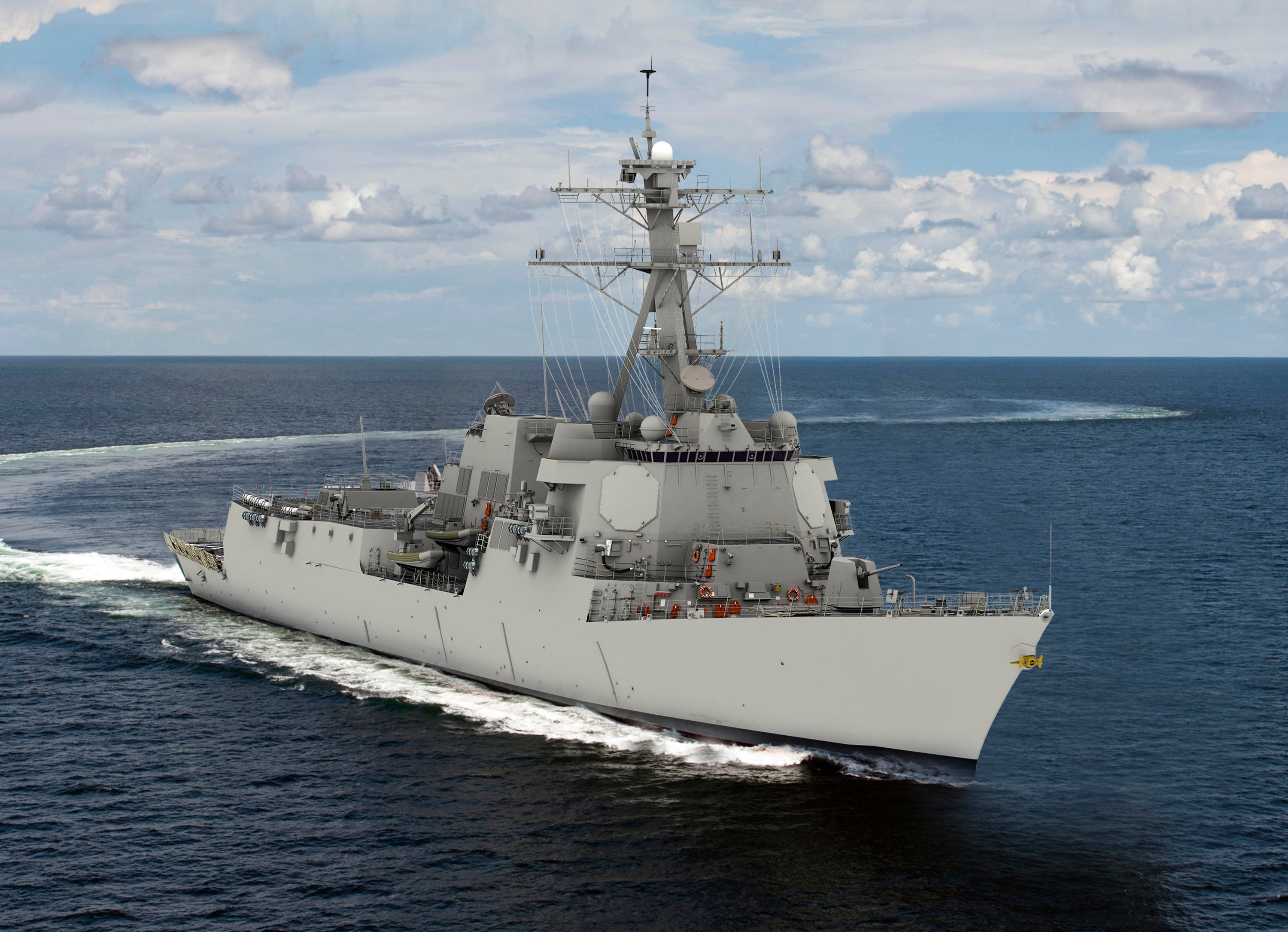
Huntington Ingalls Industries won an award to build the first of a new configuration of Arleigh Burke guided missile destroyers, according to a Tuesday Pentagon contract announcement.
HII’s Mississippi Ingalls Shipbuilding is now set to construct the first Flight III DDG that will be built around an air search radar that promises to be 30 times more powerful that the current crop of AN/SPY-1D(V) and built from the start for complex ballistic missile defense missions.
“We have proven our success in the DDG-51 class over the past 30 years, and our shipbuilders are ready now to build the first Flight III ship,” Ingalls Shipbuilding President Brian Cuccias said in a Tuesday statement from the company.
“These ships are in high demand, and this Flight III ship will be the most capable DDG-51-class ship ever built.”
The award of the first Flight III -– named for Marine Capt. Jack H. Lucas — comes as the service has been in negotiations for more than a year with HII and Bath over the engineering change proposals to modify the current Flight IIA design to accommodate the Raytheon-built AN/SPY-6 radar with the necessary power, cooling and an adequate margin for growth for future systems.
The radar will allow the guided missile destroyers to better detect and track traditional air warfare threats like cruise missiles and aircraft as well as ballistic missiles simultaneously, the Navy has said.

Late last month, acting Navy acquisition chief Allison Stiller told a House Armed Services panel the service had reached a “handshake deal” with HII for the first Flight III hull.
Previous to Stiller’s comments the service had said last year that Bath would be the first yard to build the Flight III configuration has part of a complex “ship swap” agreement that awarded a third Fiscal Year 2016 DDG to BIW while Ingalls picked up a long-lead contract award for the planned amphibious warship Fort Lauderdale (LPD-28).
However, since the deal 2016 announcement from the Navy, BIW has expressed concern with the of the Flight III design concept and publically questioned its maturity.
“We are actively working with the Navy on Flight III and swap ship contract negotiations,” a spokeswoman for the Maine shipyard told USNI News in May.
“The history of Navy shipbuilding has shown significant risk to cost and schedule in starting construction when the design of the ship and ship systems is largely incomplete.”
Last week Stiller told the Senate Armed Services Committee the service was farther behind with BIW in Flight III negotiations.
“We recently received a proposal from Bath Iron Works for their ECP (engineering change proposal) and we’re in negotiations with them,” she said.
“We’ve also received a bid from them on their ‘16 ship as a Flight IIA, and we’re also asking them to also give us an ECP to look at that as a Flight III.”
In addition to the SPY-6, the changes to the design will increase the power available on the ship by replacing three Rolls Royce 3-megawatt generators on the Flight IIA ships with Rolls Royce’s 4-megawatt generator in the same footprint on the ship.
The electrical grid on the ship will also be upgraded from the 450-volt configuration to a 4,160-volt grid, which will lead to additional design changes.
The ship is the fifth and last HII ship in a ten-hull multiyear destroyer deal crafted in 2013 between HII and Burke builder General Dynamics Bath Iron Works. At the time of the award, the price per hull came to $660 million for HII and $700 million for BIW. The cost for the hulls did not include so-called government-furnished equipment like radars or combat weapon systems which bring the cost of the destroyers to the government at more than $1 billion.
The Pentagon did not release the dollar amount of HII’s Flight III award saying, “the contract award amount is considered source selection sensitive information.”
The following is the complete June 27, 2017 contract award statement.
Huntington Ingalls Industries, Pascagoula, Mississippi, is being awarded a fixed-price-incentive-firm target modification to a previously awarded contract (N00024-13-C-2307) for incorporation of the Flight III baseline on DDG 125. Flight III will incorporate the SPY-6 (Air and Missile Defense Radar (AMDR)) and upgrade the electrical power and cooling capacity plus additional associated changes. As this award represents the first DDG 51 Flight III baseline contract award, and the Navy expects to release a competitive solicitation for additional DDG 51 class ships in the Flight III configuration in future years, the contract award amount is considered source selection sensitive information (see 41 U.S. Code 2101, et seq., Federal Acquisition Regulation (FAR) 2.101 and FAR 3.104) and will not be made public at this time. Work will be performed in Pascagoula, Mississippi (60 percent); Cincinnati, Ohio (7 percent); Walpole, Massachusetts (5 percent); York, Pennsylvania (2 percent); Camden, New Jersey (1 percent); Erie, Pennsylvania (1 percent); Charlottesville, Virginia (1 percent); and other locations below 1 percent (collectively totaling 23 percent), and is scheduled to complete in fiscal 2024. Fiscal 2017 shipbuilding and conversion (Navy) will be obligated at time of award and will not expire at the end of the current fiscal year. The Naval Sea Systems Command, Washington, District of Columbia, is the contracting activity.





